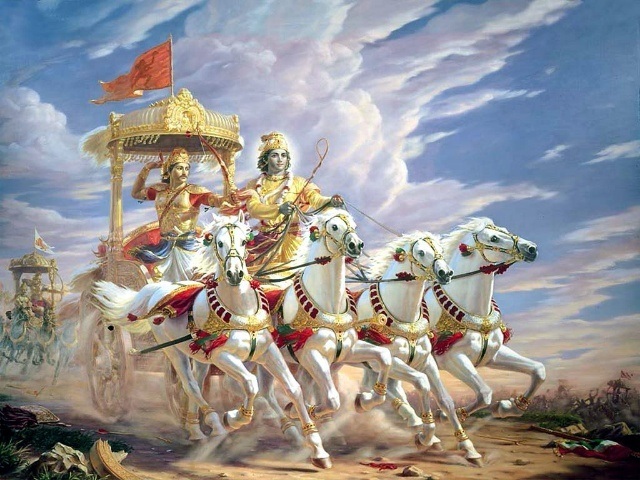The Touchstone of Samatā (equanimity) in the Bhagavad Gītā
Just as joy/sorrow experienced in dream become the same upon waking up, even so joy/sorrow become the same when we really wake up from the sleep of ignorance. This is the true meaning of Samatā (समता̄) as taught in the Bhagavad Gītā. The wise neither get elated in joy, nor do they get dejected in sorrow. This samatā is the most prized virtue, according to the Gītā. Śrī Kṛṣṇa extols the phalam (फलं) of developing an equanimous mind in the highest terms, as follows:
ihaiva tairjitaḥ sargo yeṣāṃ sāmye sthitaṃ manaḥ /
nirdoṣaṃ hi samaṃ brahma tasmād brahmaṇi te sthitāḥ // 5.19
इहैव तैर्जितः सर्गो येषां साम्ये स्थितं मनः /
निर्दोषं हि समं ब्रह्म तस्माद् ब्रह्मणि ते स्थिताः // ५.१९
Even here is the mortal plane conquered by those whose mind is established in equality or unity (of the oneness of Brahman). Brahman is spotless and is the same to all, hence they are established in the Brahman, in the Absolute.
In the previous śloka (BG 5.18), we are told that the wise look with equanimity on all, paṇḍitāḥ samadarśinaḥ (पण्डिताः समदर्शिनः). The sage of the Gītā sees the same Divine Reality in all, regardless human or animal, of high or low status.
These wise ones whose mind is completely merged in the Divine, the Absolute Brahman, who remain constantly established in identity with the Divine, and have finally become one with It, there sins being wiped out by this wisdom, reach the Supreme Goal, from which there is no return (BG 5.17).
They attain immortality. Nay, they discover the immortal nature of their Self. They discover that they were never mortal to begin with.
This is the real purpose of studying the Gītā.


Recent Comments